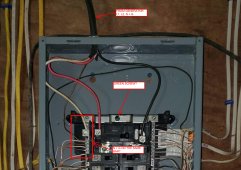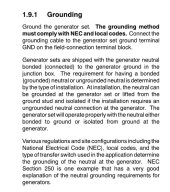Old_Skewler
Solar Enthusiast
My current off-grid setup has no grounding and I would like to address it but I am not sure what is the correct and/or best way for doing so.
The setup is the following:
- (1) 12kW Split Phase Generator located outside in a shed
- (1) 8kW Growatt AOI Split Phase inverter coupled to (1) EG4 100Ah Battery located in the same shed as generator
- (1) 100A Split-Phase panel inside the cabin with most loads wired 120V
After some research it seems like the NEC calls for (1) grounding system comprised of (2) grounding rods 6 feet apart, connected directly to the 100A panel. Other threads that I've read call for an additional grounding rod by the generator. I am not sure which way to go here. Could an electrician give me his opinion?
Lastly, assuming (1) grounding system comprised of (2) grounding rods, which diameter rod and wire gauge would be sufficient?
Thanks in advance!
The setup is the following:
- (1) 12kW Split Phase Generator located outside in a shed
- (1) 8kW Growatt AOI Split Phase inverter coupled to (1) EG4 100Ah Battery located in the same shed as generator
- (1) 100A Split-Phase panel inside the cabin with most loads wired 120V
After some research it seems like the NEC calls for (1) grounding system comprised of (2) grounding rods 6 feet apart, connected directly to the 100A panel. Other threads that I've read call for an additional grounding rod by the generator. I am not sure which way to go here. Could an electrician give me his opinion?
Lastly, assuming (1) grounding system comprised of (2) grounding rods, which diameter rod and wire gauge would be sufficient?
Thanks in advance!




